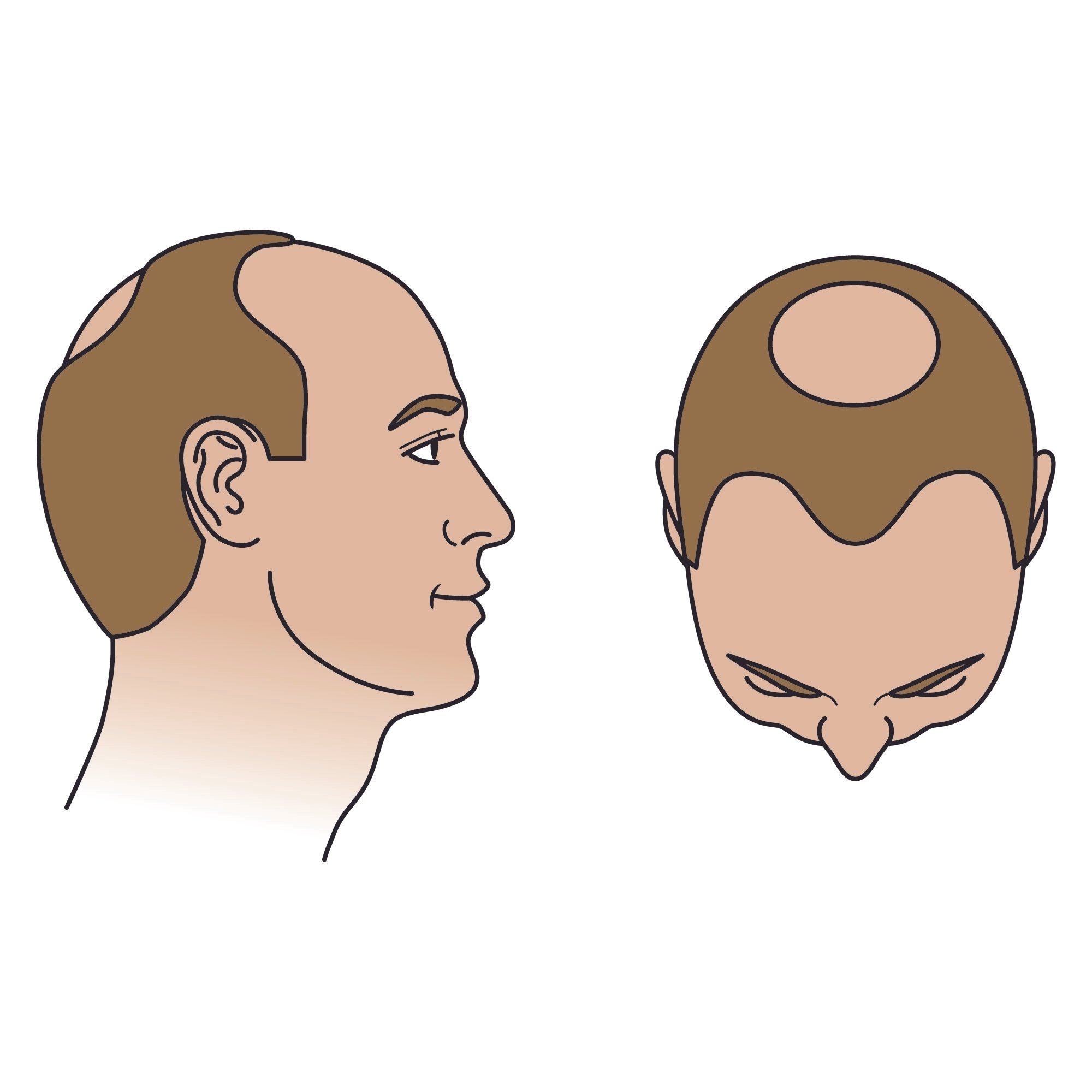
WHY IS MY HAIR
FALLING OUT?
How it starts…….
You might notice it in the mirror one day. Perhaps one of your friends mentions it, or maybe even your hair dresser brings it up. No matter which way you notice it, hair loss can be a stressful find in any person. Now that you have hair loss, the first thing to do is understand why it is happening.
Male Pattern Hair Loss
Male pattern hair loss can begin in your late teens in severe cases all the way into your golden years. Male pattern hair loss is a genetic trait that is passed down from both sides of the family (contrary to previous beliefs).
This type of hair loss can affect people at different ages than when their parents may have been affected as the gene that causes hair loss can be activated at any time in a persons life. The medical term for genetically caused hair loss is Androgenic Alopecia.
Androgenic alopecia is the most prevalent cause of hair loss in both men and women. It is hereditary and often linked to hormonal factors. This condition leads to the gradual shrinking of hair follicles, resulting in shorter and finer hair. The progression of androgenic alopecia is influenced by the hormone dihydrotestosterone (DHT), which plays a pivotal role in the hair loss process.
Dihydrotestosterone (DHT) is a potent androgen derived from testosterone through the action of the enzyme 5-alpha reductase. In the context of androgenic alopecia, DHT binds to hair follicles, particularly those genetically predisposed to be sensitive to it. This binding causes the follicles to shrink over time, leading to a shorter growth cycle and thinner hair. Eventually, affected hair follicles may cease to produce visible hair, resulting in the characteristic pattern of baldness associated with androgenic alopecia.
Other contributing factors include hormonal fluctuations, stress, poor nutrition, and certain medical conditions. Recognizing the early signs of hair loss and addressing these factors can be crucial in managing and preventing further hair thinning.
Male Hair Loss Classification:
The Norwood Scale
Male pattern hair loss is classified by severity most commonly using the Norwood Scale. This scale describes hair loss severity according to a scale of 1 to 7 with 7 being the most severe. You can see the scale listed below along with the description.
Norwood 1
Norwood 2
Norwood 3
Norwood 4
Norwood 5
Norwood 6
Norwood 7
Female Pattern Hair Loss
Genetic hair loss passed down from both the mothers and the fathers side of the family is the most common cause of hair loss in women. The medical term for this is the same as for men which is androgenic alopecia. And just like for the men, the culprit is a hormone called DHT (dihydrotestosterone).
DHT is a hormone that is created when testosterone in your body is converted through an enzyme called 5-alpha reductase. This causes your hair follicles to shrink over time and eventually will cease to produce any visible hairs.
Luckily for women the hair loss is typically less severe compared to men. The hair line typically is preserved however the density of the hair behind the hair line tends to decrease. The other possibility is that there is some temporal recession in the hairline creating a more male pattern hair line.
Hair loss in women can result from a variety of factors as well. Women may additionally experience hair loss due to hormonal changes during pregnancy, childbirth, or menopause. Conditions such as polycystic ovary syndrome (PCOS), thyroid disorders, and anemia can also contribute to hair thinning in women. Identifying the specific cause is essential for developing an effective treatment plan tailored to individual needs.
Female Hair Loss Classification:
The Ludwig Scale
Female pattern hair loss is classified by severity most commonly using the Ludwig Scale. This scale describes hair loss severity according to a scale of 1 to 3 with 3 being the most severe. You can see the scale listed below along with the description.










